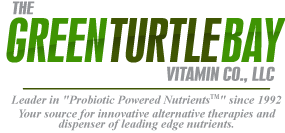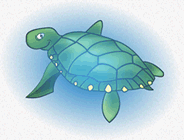 |
One of the most powerful depression treatments for producing the necessary biochemical changes in the brains of depressed individuals is to teach them to be more optimistic.
|
 |
Low levels of serotonin contribute to depression. A depression treatment would be to increase serotonin through drugs or nutrients.
|
 |
 It is important to rule out the simple organic factors that are known to contribute to depression ie. nutrient deficiency or excess, drugs (prescription, illicit, alcohol, caffeine, nicotine, etc.–see a nutritional approach to neutralize addictions,hypoglycemia, consumption, hormonal derangement, allergy, environmental factors, and microbial factors. It is important to rule out the simple organic factors that are known to contribute to depression ie. nutrient deficiency or excess, drugs (prescription, illicit, alcohol, caffeine, nicotine, etc.–see a nutritional approach to neutralize addictions,hypoglycemia, consumption, hormonal derangement, allergy, environmental factors, and microbial factors.
|
 |
Cognitive therapy has been shown to be as effective as antidepressant drugs in moderate depression treatments..
|
 |
Depression is often a first or early manifestation of thyroid disease. |
 |
Increased cortisol levels are common in depression This may be related to diabetes. |
 |
Elimination of sugar and caffeine has been shown to produce significant benefits in clinical trials.
|
 |
Increased participation in exercise, sports, and physical activities is associated with decreased symptoms of anxiety, depression and malaise.
|
 |
A deficiency of any single nutrient can alter brain function and lead to depression, anxiety, and other mental disorders.
|
 |
Hypoglycemia can cause depression. |
 |
An insufficiency of omega-3 oils in the diet has been linked to depression. See essential fatty acids |
 |
Numerous double-blind studies have shown 5-hydroxytryptophan (5-HTP) to be as effective as antidepressant drugs, but it is better tolerated and is associated with fewer and milder side effects.
|
 |
Extracts of St. John’s wort standardized for hypericin (usually 0.3 %) are the most thoroughly researched natural antidepressants. (see St. John’s wort) |
 |
Over 25 double-blind studies have shown St. John’s wort to produce as good or better results compared to standard antidepressant drugs used in depression treatments, but with significantly fewer side effects. |
 |
Sometimes depression is the result of a lack of sunlight. This is sometimes referred to as SAD (seasonal affective disorder). Getting additional exposure to sunlight, taking melatonin in the evening and St. John’s wort during the day can be helpful.
|
| Homocysteine and St. John’s Wort |
|
Homocysteine is a toxic amino acid. Much like cholesterol, high homocysteine increases the risk for heart attacks and stroke.Homocysteine and SAMe are like two ends of a see-saw. What makes one go up, makes the other go down. So the same nutrient formula that helps fight depression, may have the beneficial side effect of reducing heart disease and stroke.
In order to increase SAMe one can take the nutrient directly, but this is costly. However TMG, folic acid, Betaine TMG (not to be confused with Betaine HCL) works along with Vitamin B6, folic acid and Vitamin B12 to augment the formation of SAMe, an amino acid in the brain. This in turn reduces homocysteine. Amino acids are proteins. (see Homocysteine, TMG and the SAMe connection) Many people with diabetes have high homocysteine. |
| Nutritional Recommendations: We have just what you need! |
| For stress management and/or depression we recommend taking |
|
|
|
| At night or with dinner: |
|
PowerSleep (includes 5HTP and melatonin) at night |
|
| Stress takes its toll on the immune system. |
| These formulas were specifically designed to give nutritional support for these conditions. |
|
| Be sure to see our section on brain nutrition. |
|






